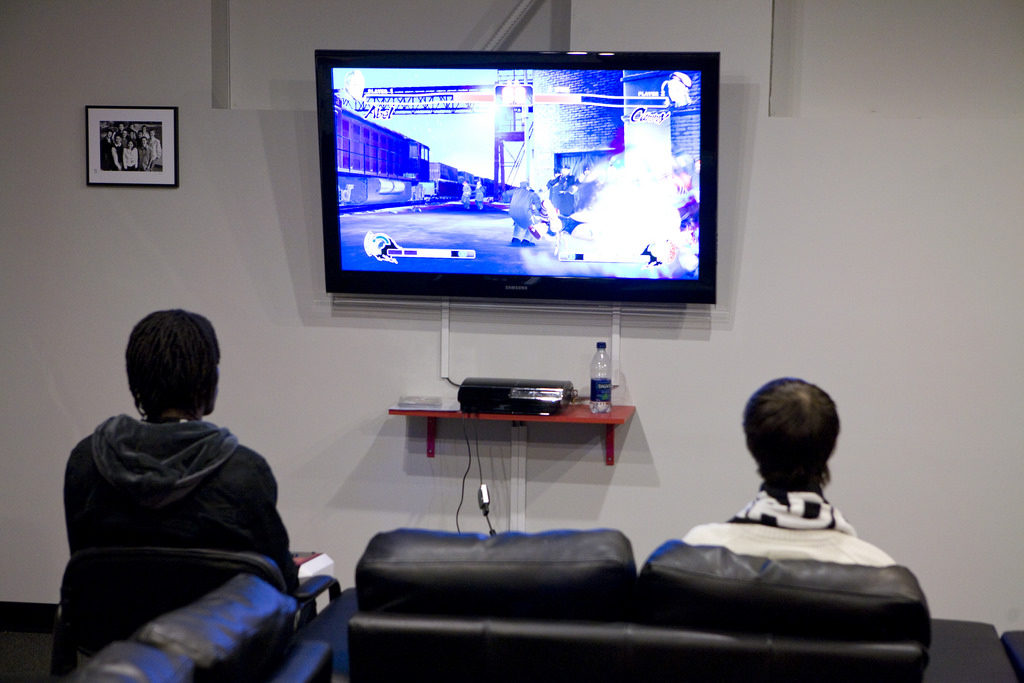Photo by Ryan Cash / CC BY-SA 3.0
Building an entire game from scratch is an exciting prospect for game designers, but taking on such a project can be daunting. Once you know where to begin, the project will be a lot less intimidating, allowing you to focus on the creative experiments involved with designing your own game.
There’s no one-size-fits-all blueprint for creating a game design that will appeal to everyone. With the right resources, insight, and preparation, you can make your game design and development process much more efficient and with clearer intent.
Maintain a library of concept art

Keep a collection of concept art that you can always point to when you need visual or cultural references. A medieval fantasy game for example, might have background art that draws from a wide knowledge of historical facts. Incorporating different artistic styles reflect a greater attention to detail, and helps keep players engaged throughout the game.
Since you’re still in the conceptualizing stage, your illustrative references don’t need to be colorful or fully detailed. Your concept art should let you explore different creative options and directions. Traditional pencil sketches are good enough to start with, as you’re going to be making continuous revisions throughout the stages of visual development.
Play and critique a variety of games

In order to understand how excellent game design should look and feel, play the types of you games you hope to emulate. Consider your own experience as a player from a critical perspective and note factors that make a dynamic and enriched game. Are the characters fun to play? Is the storyline interesting enough for multiple playthroughs? Do the sequence of events flow naturally?
Branch out to different genres and see what takeaways you can get from types of gameplay; role-playing games and mobile games have vastly different audiences and formats, but each present their own set of rewards. Understanding what makes a successful game addictive will help give you insight into which features to include in your own games.
As you’re considering possible applications, think of how you can make each play session yield a new unique experience that incentivizes players. Do your research and utilize other resources to learn from others’ experiments and help you discern what game features might be worth trying.
Simplify your prototype

Finishing your game prototype is an exciting milestone, and it’s the point where you’ll really get a sense of your progress so far. Prototypes serve two main purposes: exhibit the first model of your game to testers and gauge the quality of its key features and processes.
Your first prototype can be overwhelming, but don’t overcomplicate it. Audiences should be able to identify the game’s purpose and objectives, and shouldn’t be hindered by clumsy controls. Despite the potential problems that might arise, each flaw that surfaces is an opportunity for improvement.
Remember your first run isn’t meant to be perfect! Make your prototype simple, yet malleable enough to implement adjustments quickly. It’s natural for your prototype to go through numerous iterations as you find what works, so don’t get too attached and learn to let go of the little things.
Assemble a focus group

User experience is a key aspect that can make or break your game development. If you’re not impressing your testers, then you don’t have a valuable game that can be put through development and onto the market.
To make their game experiences more interesting and customizable, introduce scenarios where users can choose from different choices or earn points to stack up rewards. See how the testers’ experiences compare and live up to their expectations.
Expose your game to multiple types of players and identify pain points early on through multiple rounds of testing. Their honest feedback is critical and will force you to evaluate your work with fresh eyes, especially if you’ve been locked in tunnel vision. Maybe there’s a level that contains challenging missions, but lacks action towards the end. Listening to your users is essential to whittling down filler or elements that fall flat, and help move your game closer to its final version.
Learn a programming language

There is an important distinction between game design and game programming. Designing a game involves controlling aspects such as concept and narrative, and other parts of the framework, but programming a game has to do with writing the code that serves as the game’s skeleton, or framework. Though game designers might have technical knowledge, many usually have an artistic emphasis.
While it’s not a requirement to know a programming language when you work on game design, specializing in a coding language or two is a huge advantage. Whether you go with Java, C++, C# or another option, being well-versed in a language gives you greater control over how the game is internally programmed and structured. Coding knowledge streamlines communication with other developers so you can convey ideas directly and refine the game much more quickly.
Though designing your first game isn’t going to be smooth-sailing, the process of game creation is an exciting adventure in itself. You may be learning and making mistakes along the way, but remember to have fun while you’re at it.
Need to learn the basics before starting your first game design? Learn about microgame engines and game development topics by enrolling in our free course below:
Introduction: Elements of Microgame Design
Worcester Polytechnic Institute
